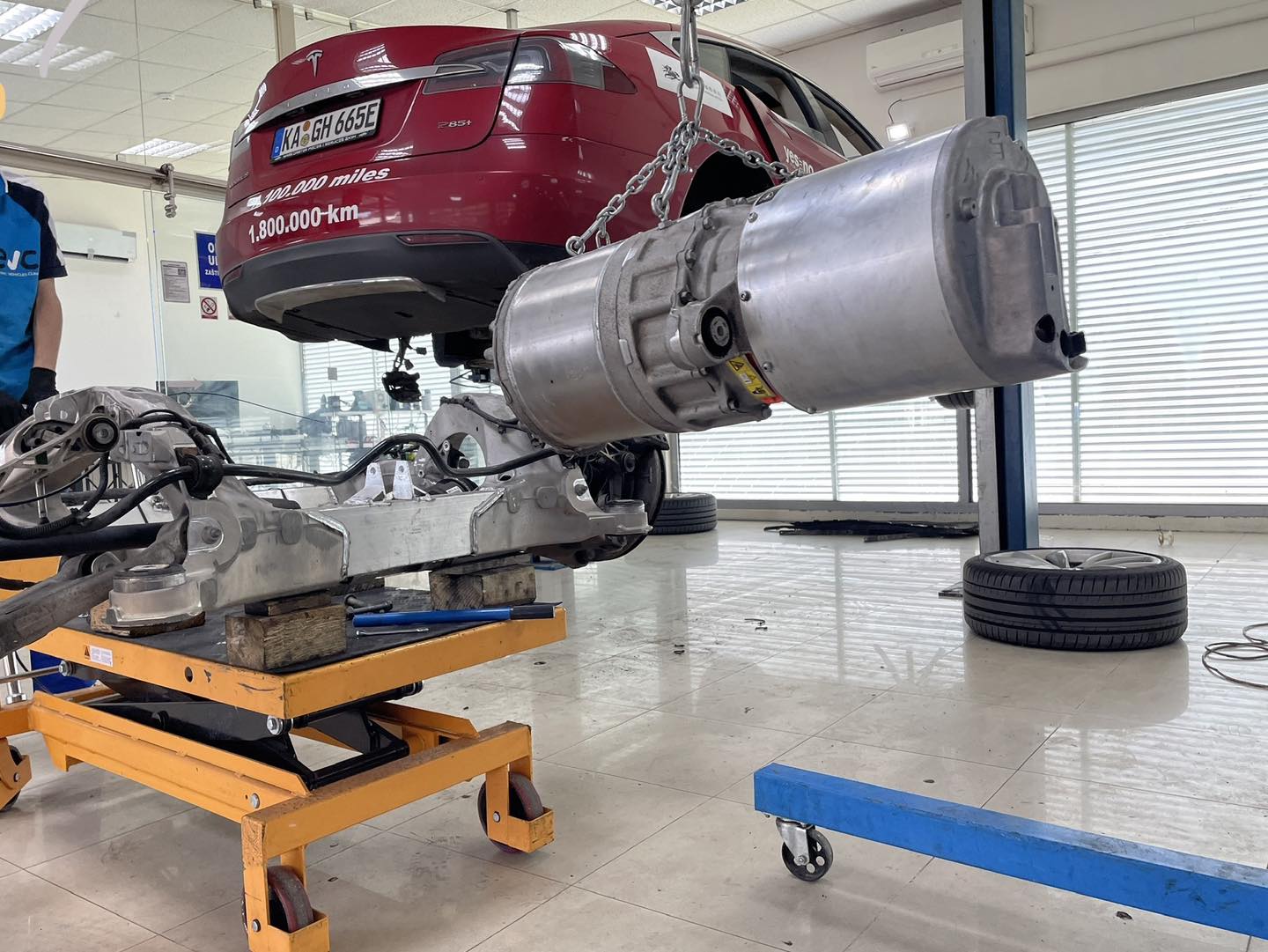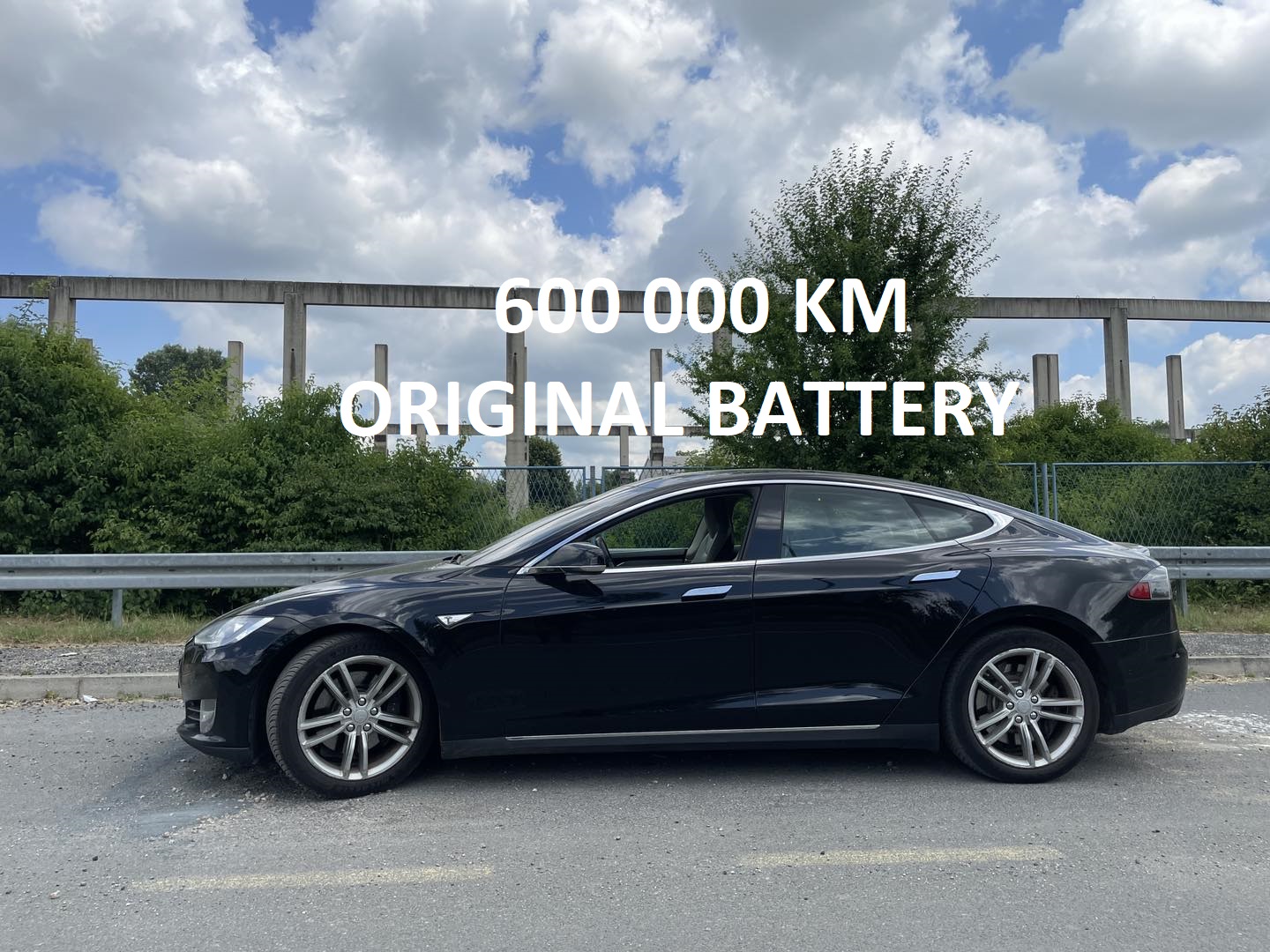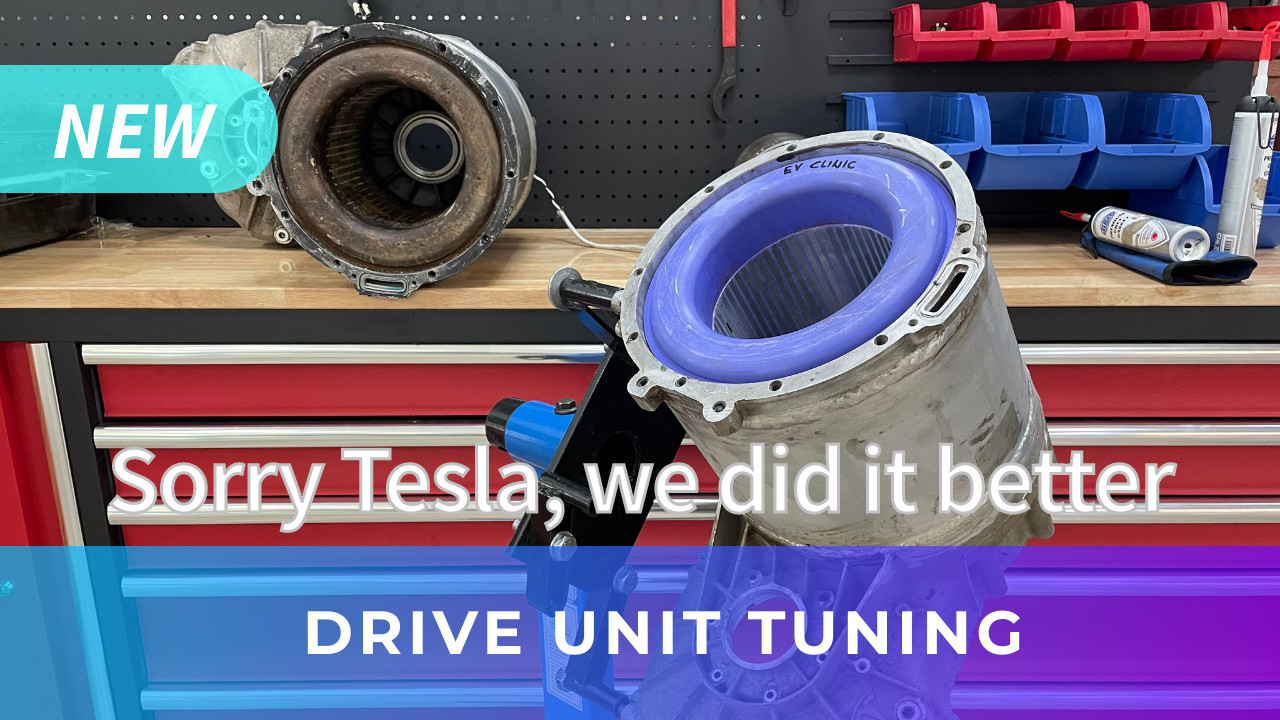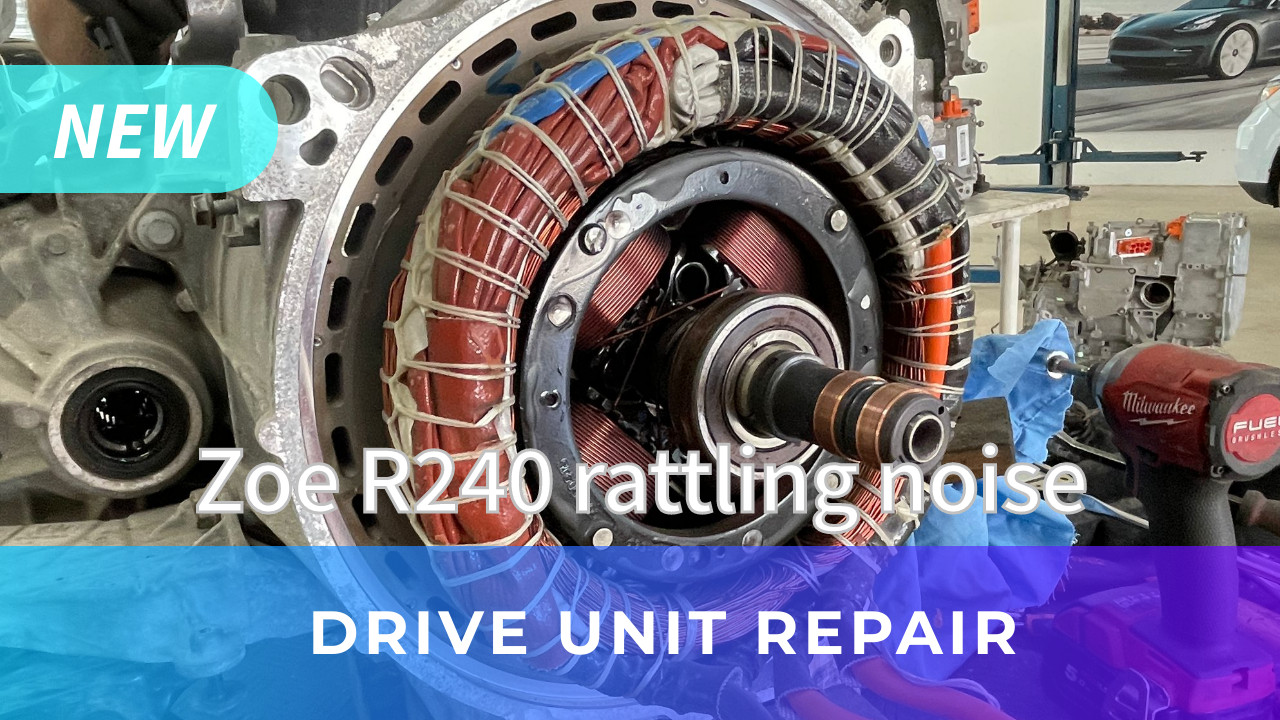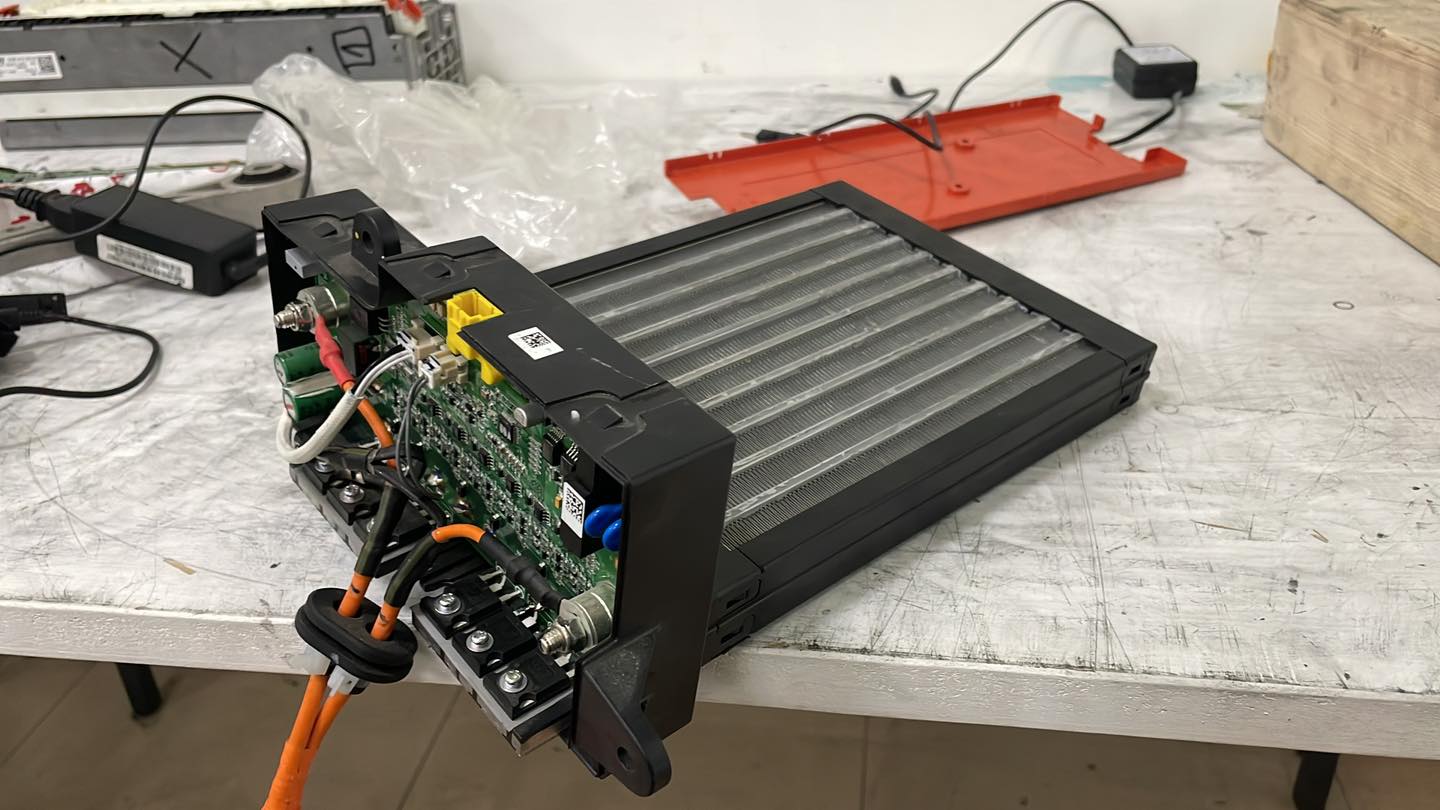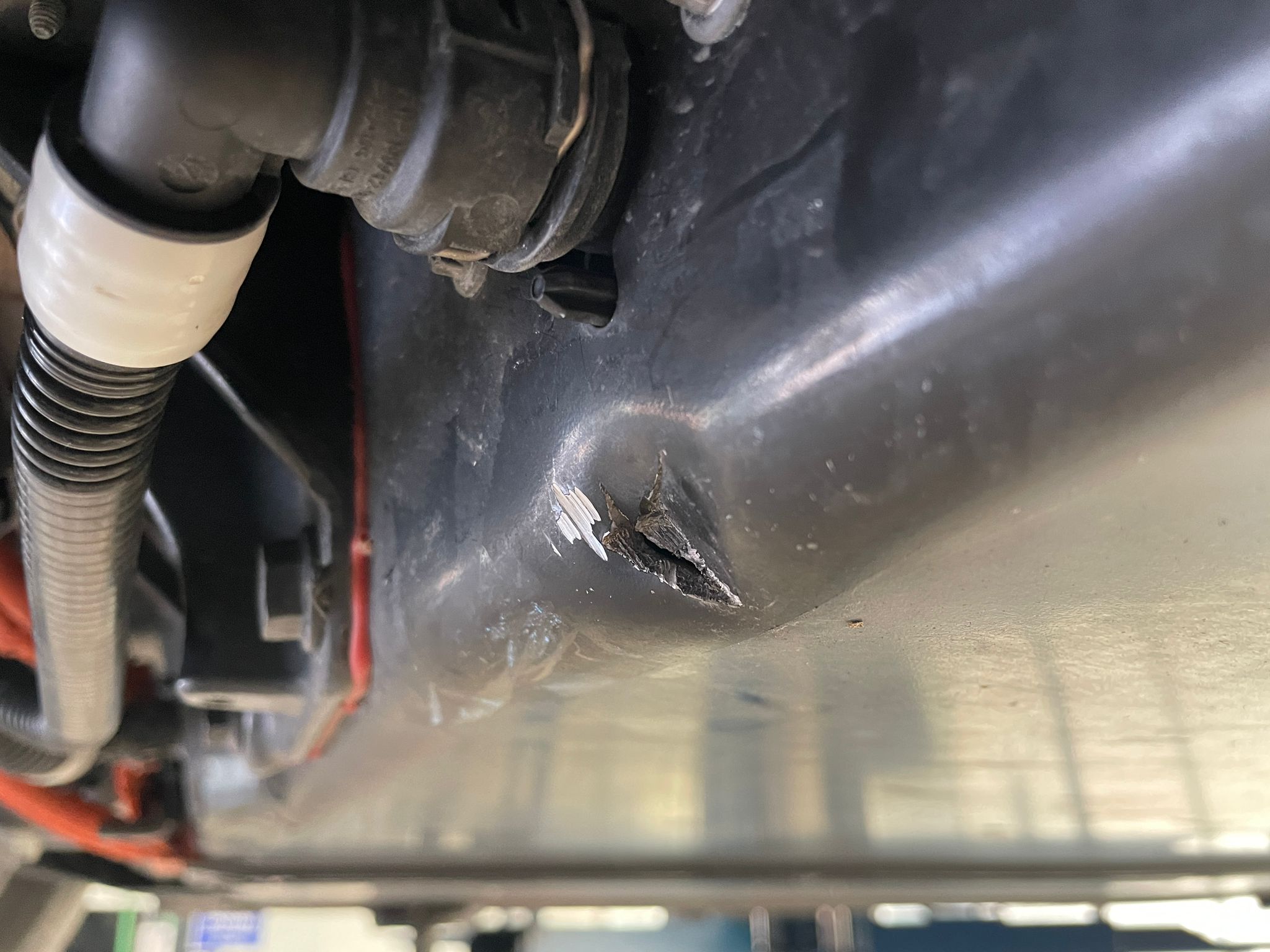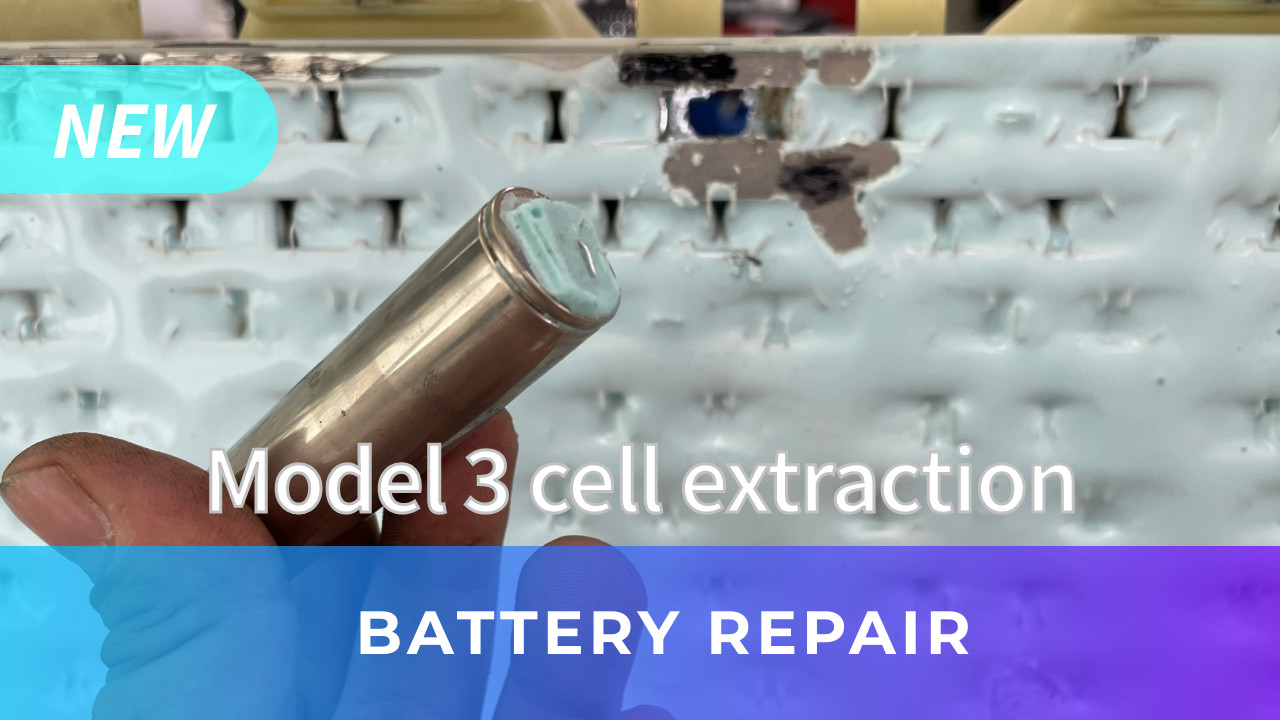
Model 3 LR 2170 Cell Extraction – Finally, an opportunity arose for a new project, to purchase and save the entire battery pack, demonstrating that the entire battery is never replaced as whole (except in Nissan Leaf or Mercedes with programmed defects). One faulty cell in the structural block of 25S was discharging one group, not disabling the vehicle but reducing the range and charging level. In situations where the group’s discharging is permanent, it is crucial to repair/remove the faulty cell as quickly as possible. If the voltage of that group drops completely and remains empty for more than a month below 2.5V, it leads to permanent damage to the parallel group and permanently irreparable condition of that particular block (out of a total of 4). We bought the battery for the purpose of developing repair solutions, creating tools, and repair methods. For the first time, we attempted and succeeded using the highest quality tools and materials to assemble the battery and later perform a road test to confirm proper balancing, charging, discharging, and that there were no other damaged cells except that one. Recently, we were contacted by the French LeMonde tabloid to give our opinion on possible EU regulations on battery design, where they directly obstruct Tesla’s and other NON-EU manufacturers’ innovation, directing how bureaucrats would want the battery pack to be designed, allegedly in fear of how repairs will be done and to “protect customers” whom they do not protect from domestic profiteers. There is no irreparable battery, there is no problem that cannot be solved, it may be a more or less complex procedure, but it can never be impossible (except in the case of Nissan Leaf). The repairability problem does not lie in the design, such as the “structural pack,” but in the availability and accessibility of parts for repair, designing battery systems without programmed failures, availability of electronic controllers for battery systems, cells, and similar approaches to a sustainable circular economy… the ones that EU manufacturers do not implement.
Model 3 LR 2170 Cell Extraction – Napokon nam se ukazala prilika za novi projekat da kupimo i spasimo cijeli baterijski paket, demonstriramo da se nikad ne mjenja cijela baterija (osim na Nissan Leaf ili Mercedesu sa programiranim kvarom). Jedna neispravna ćelija u strukturnom bloku od 25S je praznila jednu grupu, nije onesposobila vozilo vec je smanjila domet i razinu punjenja. U situacijama gdje je pražnjenje grupe trajno, izuzetno je bitno u sto kracem roku sanirati kvar, ako se desi da potpuno padne napon te jedne grupe i ostane prazno duze od 1og mjesec ispod 2.5V tada dolazi do trajnog ostecenja paralelne grupe i trajnog nepopravljivog stanja tog jednog bloka (od ukupno 4 koliko ih ima). Bateriju smu otkupili u svrhu razvoja riješenja za reparaciju, izradu alata i metoda reparacija. Prvi put smo pokušali i uspjeli korištenjem najkvalitetnijih alata i materijala kako bi bateriju sklopili i napravili roadtest da potvrdimo da se pravilno balansira, puni, prazni i da nema još oštećenih drugih ćelija osim te jedne. Nedavno su nas zvali iz Francuskog LeMonde tabloida da damo svoje mišljenje na mogucu EU regulativu dizajna baterija gdje se direktno obstruira inovativnost Tesle i drugih NON EU proizovdjača gdje bi dirigirali kako bi birokrati zeljeli da se dizajnira battery pack jer tobože su u strahu kako će se popravljati i da “zaštite kupce” koje ne štite od domaćih lihvara. Ne postoji nepopravljiva baterija, ne postoji problem koji je ne riješiv, može biti zahvat teži ili lakši ali nemoguć ne moze biti nikada (osim kod nissan leaf). Problem popravljivosti ne leži u dizajnu, “structural pack” recimo, već dobavljivosti i dostupnosti dijelova za reparaciju, dizajniranjem baterijskih sustava bez programiranih kvarova, dostupnosti elektroničkih kontrolera baterijskih sustava, ćelija i slicnih olakotnih pristupa odrzivoj kruznoj ekonomiji… onoj koju EU proizvodjači ne provode.
Part number:
Errors: BMS_A064, BMS_A079, BMS_A066
Tesla Price: 8900Eur
EVC: 4500Eur













